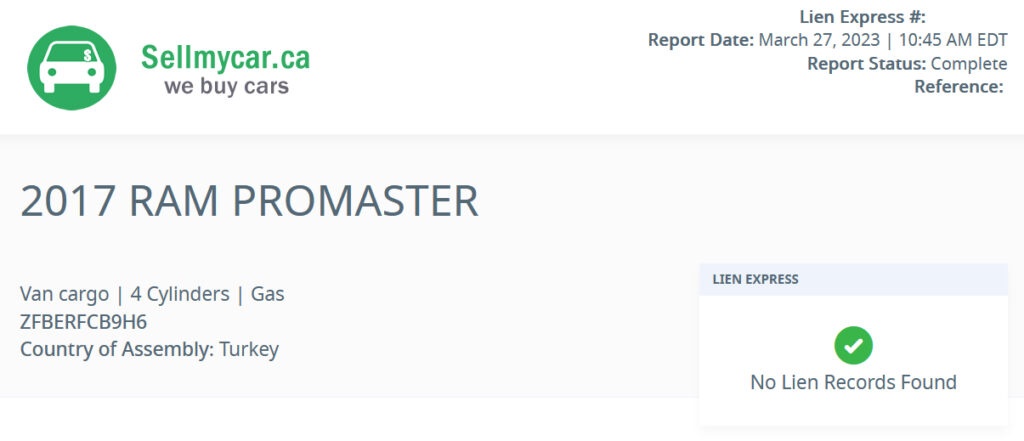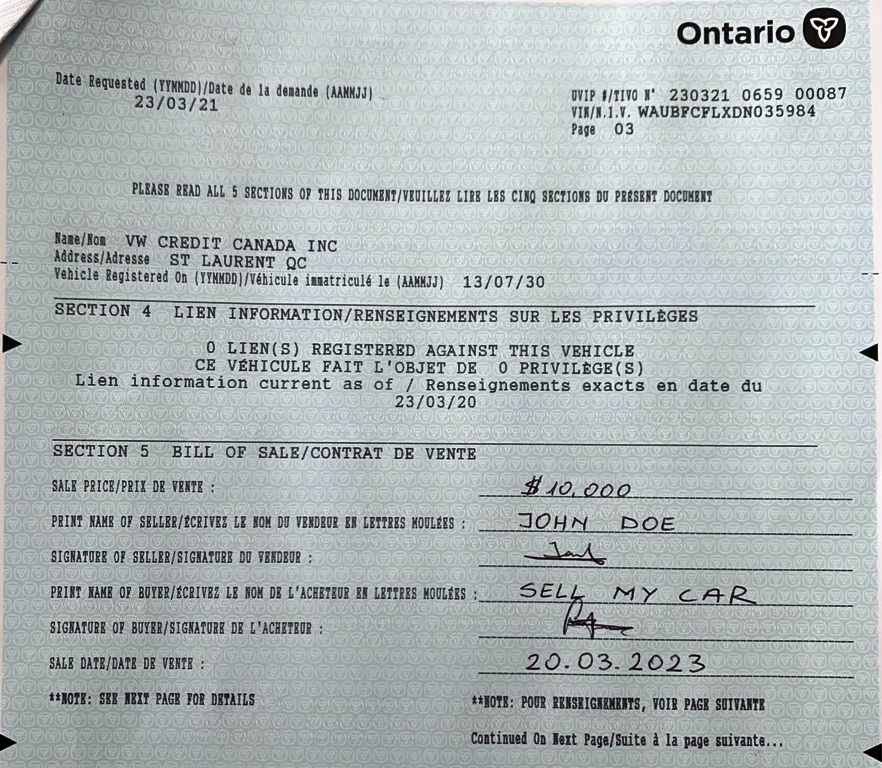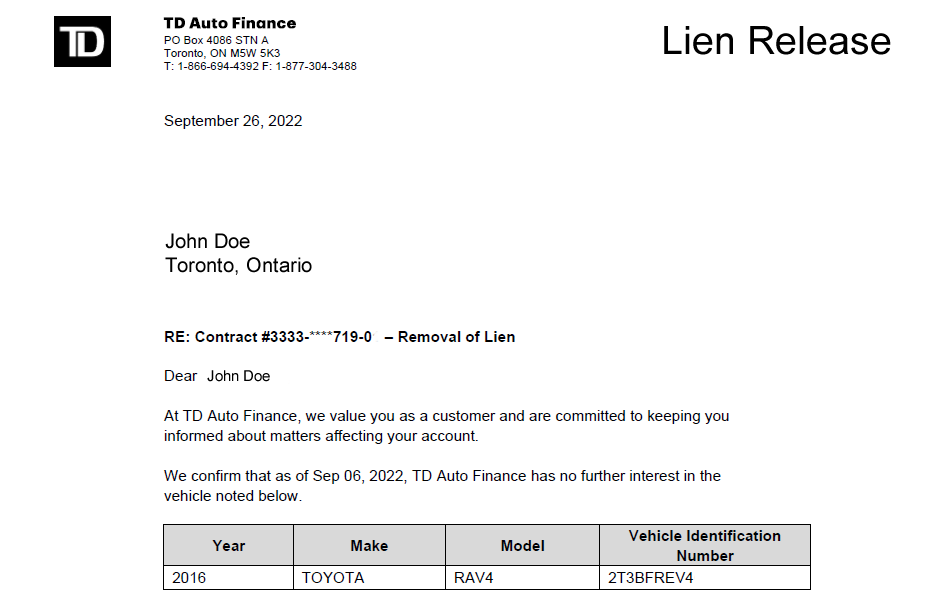How to Sell a Car With a Lien in Toronto
A car lien is the interest of a bank or a dealership in a vehicle. When you get a loan to purchase a car, the lender will place a lien on the vehicle. This lien will remain in effect until the loan is fully paid off.
How to find if a car has a lien?
If you want to know if a car has a lien, you need to get a Used Vehicle Information Package. As a buyer, when selling a car privately you are required by law to provide sellers with a UVIP. As a seller, always request this document before buying a vehicle. The UVIP can be purchased from any ServiceOntario for $20.

Can you sell a car with lien in Toronto, Ontario?
Yes, it is possible and completely legitimate to sell a car with a lien. However, there are several steps to follow before doing so. Selling a car with a lien can be more complex than selling one that has been paid off, but it can be done safely and easily with a little effort. There are some general steps to take when selling a car with a lien.
Planning
Planning is the first step when selling a car with a lien. You will need to decide on the approach to take, and there are two options that can help you get out of the lien.
- Sell it to a registered dealer. This is the easiest way to sell a car with a lien, as dealers are professionals who know the process well and can simplify the transaction for you.
- Sell it privately. This method is more complex, but with some effort, you can still sell your vehicle with a lien and get a good price for it.
Find out the buyout amount
Before selling the car, you need to find the payoff amount, which is the outstanding balance on the car loan that you still owe. This information is important as it can help you make informed decisions. You can find out the lien amount by contacting the lien holder and requesting the buyout amount. If the lien holder is a bank, you can also find this amount by reviewing your online banking account.
Note that only the person whose name is on the lien record can communicate with the bank and request lien details.
Find out the car value
To sell a car with a lien, you also need to find out its value. You can use online valuation tools or get an appraisal from a professional. Knowing the payoff amount and the vehicle’s value, you can determine if your vehicle is worth more than the payoff amount or if you have negative equity. If you have negative equity, you’ll have to find the funds to pay off the difference.Here are two examples to illustrate positive and negative equity:
Example 1: John owns a 2015 Honda Civic and owes $10,000 to TD Bank. He receives an offer of $15,000 from Sell My Car. John can pocket $5,000 after paying off the loan, so this is positive equity.
Example 2: John owns a 2015 Honda Civic and owes $15,000 to the bank. He receives an offer of $10,000 for the car. In order to sell the car, John must first pay off the $15,000 to the bank, and then the buyer will pay him $10,000. This is called negative equity.
Sell the car
Once you have got the lien information and your vehicle’s value, it is time to find a buyer. Process of selling a car in Ontario involves preparing it for sale, advertising it, and negotiating with potential buyers. When selling a car with a lien, it is crucial to be transparent and inform potential buyers of the outstanding lien. This helps to build trust and prevent any legal issues in the future. By doing so, you can increase the chances of a successful sale.
Negotiate the payment of the loan
After finding a buyer interested in purchasing a car with a lien, the next step is to negotiate the payment of the loan. There are several options available for both the seller and buyer:
- Seller pays off the lien. If the seller has the funds available, the easiest solution for everyone is to pay off the lien first and then receive payment from the buyer.
- Buyer pays off the lien. If the buyer agrees to pay off the lien directly, the seller should contact the lien holder and ask for the easiest method and type of payment that can be accepted.
- Another option, but not recommended, is for the buyer to pay the seller the full amount agreed upon for the car, and for the seller to pay off the lien after receiving the payment.
No matter which option is chosen, it is important to put everything in writing in the bill of sale. This helps to avoid any misunderstanding or potential legal issues in the future. A bill of sale can be found on the last page of the Used Vehicle Information Package, or you can find a detailed one online.

Transfer ownership
Once the loan is paid off, the seller can transfer ownership of the car to the buyer. Make sure to provide all necessary paperwork, including the application for transfer, bill of sale, and safety standards certificate.
Release the lien
Finally, the seller will need to release the lien on the car. This is done by the lien holder, which will remove the lien from the MTO system after receiving payment. The lien holder will then send the seller the lien release document.

What is a lien release document?
The lien release is a legal document that shows that the lien on the vehicle has been released. It is important to keep this document as proof that the lien has been paid off and released.
Selling a car with a lien can be a complex process, so it’s important to work with a knowledgeable professional such as a trusted car dealership to ensure a smooth transaction. In case you decide to sell it privately, trust between the seller and buyer is crucial to make the sale happen.
